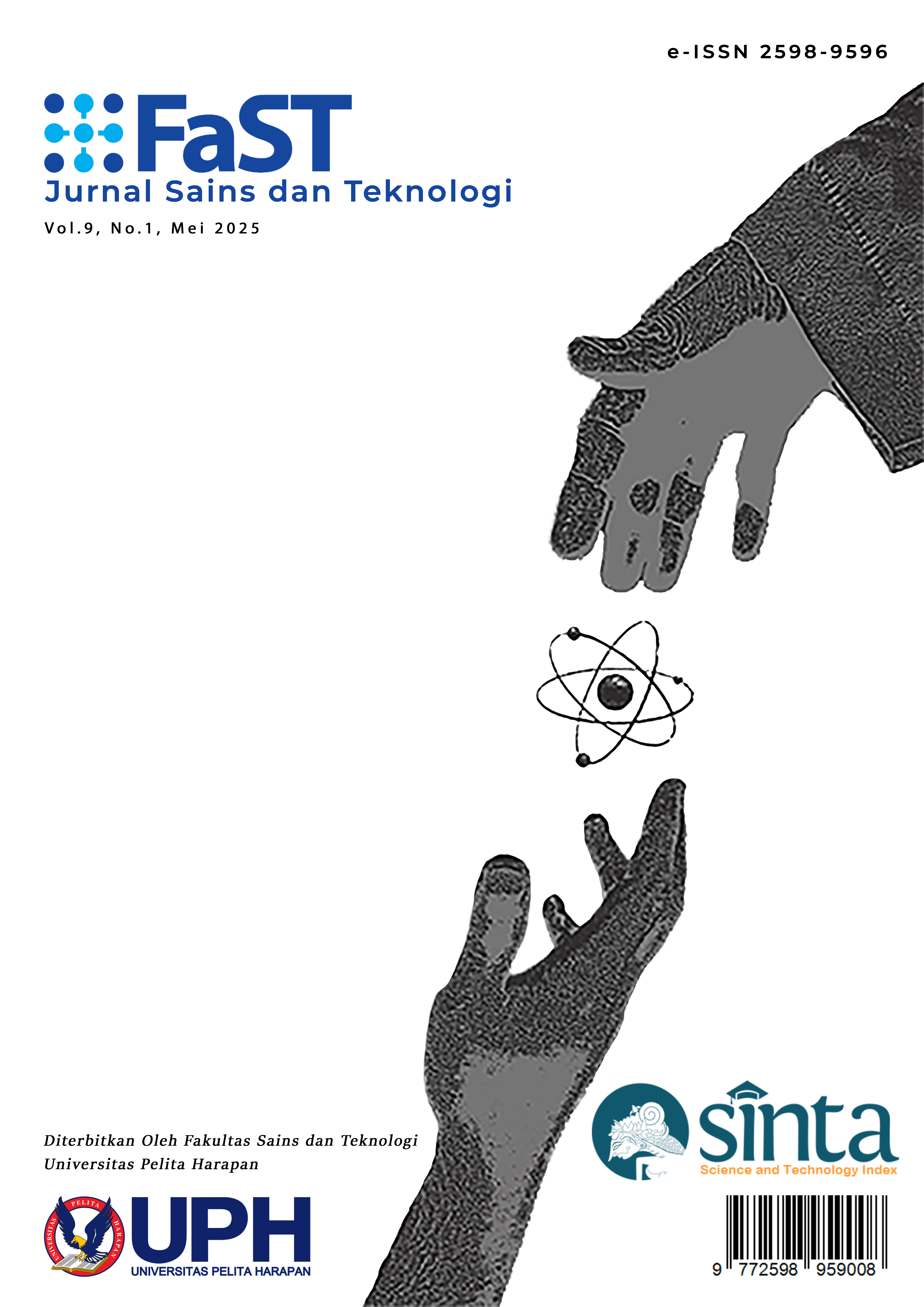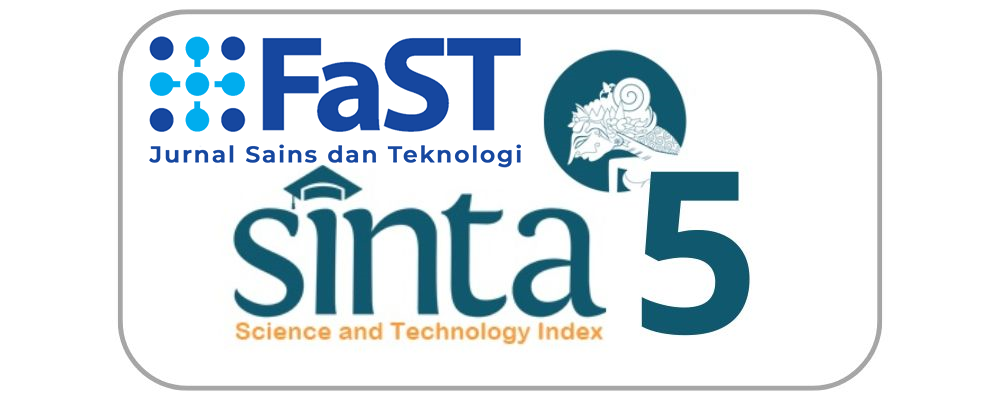Efek Edible Coating dengan Penambahan Ekstrak Daun Jati pada Mutu Daging Sapi Segar
[Effect of Edible Coating with Addition of Teak Leaf Extract on The Quality of Fresh Beef]
DOI:
https://doi.org/10.19166/jstfast.v9i1.9607Keywords:
antibacterial, beef quality, edible coating, storage time, teak leavesAbstract
Beef is one of perishable food because it has the availability of complete nutrition. Storage at low temperatur could slow down quality degradation. Edible coating is a method that has been proven capable of protecting and inhibiting damage to food products. The addition of antimicrobial compounds can be an alternative in increasing the durability and quality of food during storage. Red teak leaves, Chinese teak leaves and Dutch teak leaves are known to have active compounds that can act as antibacterial. This study aims to study the effect of adding different types of teak leaf extract as an additive to the edible coating on the quality of beef stored at refrigerator temperatures. Each ethanol extract of teak leaves will be seen its antibacterial activity based on inhibition zones produced using the well diffusion method, MIC (Minimum Inhibitory Concentration) and MBC (Minimum Bactericidal Concentration) at concentrations of 1, 2, and 3%. Red teak leaves have the ability to produce the best inhibition zone diameter between the two other types of teak leaves at 3% extract concentration can produce inhibition zone diameter of 14.85 ± 0.05 mm against Escherichia coli bacteria and 12.93 ± 0.55 mm against Staphylococcus aureus bacteria. Edible coating with the addition of 3% red teak leaf extract is known to be able to maintain the quality of beef until the storage time of the 9th day at refrigerator temperature (chilling) based on parameters of pH, color (lightness and hue value) and total plate count (TPC).
Bahasa Indonesia Abstract: Daging sapi merupakan bahan pangan yang mudah mengalami kerusakan karena memiliki ketersediaan nutrisi yang lengkap. Salah satu cara untuk memperlambat penurunan mutu daging sapi yaitu dengan penyimpanan suhu rendah. Edible coating merupakan metode yang telah terbukti mampu melindungi dan menghambat kerusakan produk pangan. Penambahan senyawa anti mikroba dapat menjadi alternatif dalam meningkatkan daya tahan dan kualitas bahan pangan selama penyimpanan. Daun jati Merah, daun jati Cina dan daun jati Belanda diketahui memiliki senyawa aktif yang dapat berperan sebagai antibakteri. Penelitian ini bertujuan untuk mempelajari efek dari penambahan ekstrak daun jati dengan jenis yang berbeda sebagai bahan tambahan pada edible coating terhadap mutu daging sapi yang disimpan pada suhu refrigerator. Setiap ekstrak daun jati akan dilihat aktivitas antibakterinya berdasarkan zona hambat yang dihasilkan menggunakan metode difusi sumur, nilai MIC (Minimum Inhibitory Concentration) dan MBC (Minimum Bactericidal Concentration) pada konsentrasi 1, 2, dan 3%. Daun jati Merah memiliki kemampuan menghasilkan diameter zona hambat yang paling baik diantara kedua jenis daun jati lainnya pada konsentrasi ekstrak 3% dapat menghasilkan diameter zona hambat sebesar 14,85 ± 0,05 mm terhadap bakteri Escherichia coli dan 12,93 ± 0,55 mm terhadap bakteri Staphylococcus aureus. Edible coating dengan penambahan ekstrak daun jati Merah 3% diketahui mampu mempertahankan mutu daging sapi hingga waktu penyimpanan hari ke-9 pada suhu chilling (refrigerator) berdasarkan parameter mutu pH, warna (lightness dan nilai Hue) dan total plate count (TPC).
References
Aberle, E. D., Merkel, R. A., Judge, M. D., Hedrick, H. B., Mills, E. W., Gerrard, D. E., & Forrest, J. C. (2001). Principles of meat science (4th ed.). Kendall Hunt.
Alifia, K. Y., Sarjana, T. A., & Muryani, R. (2020). Signifikasi Kualitas daging ayam broiler SIAP Konsumsi Berdasarkan Pada pengaturan setting zona produksi di Dalam Panjang closed House Berbeda Di Musim Kemarau. Jurnal Aplikasi Teknologi Pangan, 9(1), 1. https://doi.org/10.17728/jatp.5127
Angel, V. (2019). Karakterisasi ekstrak kulit melinjo (Gnetum gnemon L.) merah sebagai antibakteri [Unpublished bachelor’s thesis]. Universitas Pelita Harapan.
ASTM. (1995) “Standard Text Method for Water Vapor Transmission of Material.” ASTM Book of Standard
Badan Standarisasi Nasional. (2008). Mutu karkas dan daging sapi (SNI 3932:2008)
Embuscado, M. E., & Huber, K. C. (2009). Edible film and coating for food applications. Springer.
Esther, F. (2017). Karakteristik Senyawa Antibakteri Ekstral Daun Jati (Tectona grandis L.). [Unpublished bachelor’s thesis]. Universitas Pelita Harapan
Johannes, E., Tuwo, M., Katappanan, N., Henra, H., & Wirianti, G. (2022). Edible coating berbasis pati ubi kayu manihot esculenta Crantz Dan Jahe Merah Zingiber officinale var. Rubrum Memperpanjang Umur Simpan Buah tomat solanum lycopersicum L. Agrotrop : Journal on Agriculture Science, 12(2), 204–218. https://doi.org/10.24843/ajoas.2022.v12.i02.p03
Kia, Kristoforus. W., Fobia, K. G., & Pardosi, L. (2023). Kualitas Mikrobiologi daging se’i SAPI melalui metode curing menggunakan Ekstrak Daun Jati (Tectona grandis l.f.) Pada Penyimpanan Suhu Ruang. Pro-Life, 10(2), 791–803. https://doi.org/10.33541/pro-life.v10i2.4723
Liur, I. J., Souhoka, D. F., & Papilaya, B. J. (2022). Analisis kadar air Dan Kualitas Fisik daging Sapi Yang dijual di pasar tradisional kota ambon. Agrinimal Jurnal Ilmu Ternak Dan Tanaman, 10(1), 45–50. https://doi.org/10.30598/ajitt.2022.10.1.45-50
Mancini, R. A., & Hunt, M. C. (2005). Current research in Meat Color. Meat Science, 71(1), 100–121. https://doi.org/10.1016/j.meatsci.2005.03.003
Senturk Parreidt, T., Müller, K., & Schmid, M. (2018). Alginate-based edible films and coatings for Food Packaging Applications. Foods, 7(10), 170. https://doi.org/10.3390/foods7100170
Pazra, D. F. (2024). Evaluasi Kualitas Fisik Dan Mikrobiologi daging Sapi Yang dijual Pada Pasar tradisional Dan supermarket di Kecamatan Caringin, Kabupaten Bogor. VITEK : Bidang Kedokteran Hewan, 14(2), 220–228. https://doi.org/10.30742/jv.v14i2.299
Rachmawaty, D., & Arisanty, A. (2021). Pemanfaatan Perasan Buah belimbing WULUH (Averrhoabilimbil.)Sebagai Pengawet Alami Pada daging SAPI segar. Media Farmasi, 17(1), 31. https://doi.org/10.32382/mf.v17i1.1971
Ramadhani, P. D., Supriyadi, S., Hendrasty, H. K., Laksana, E. M., & Santoso, U. (2023). Karakteristik edible film Aktif Berbasis kitosan Dengan Penambahan Ekstrak Daun Jati. Jurnal Teknologi Dan Industri Pangan, 34(1), 1–12. https://doi.org/10.6066/jtip.2023.34.1.1
Trisia, A., Philyria, R., & Toemon, A. N. (2018). Uji Aktivitas antibakteri EKSTRAK Etanol Daun Kalanduyung (Guazuma ulmifolia LAM.) Terhadap pertumbuhan staphylococcus aureus dengan metode DIFUSI cakram (Kirby-Bauer). Anterior Jurnal, 17(2), 136–143. https://doi.org/10.33084/anterior.v17i2.12
Ulum, M., Mu’tamar, M. F., & Asfan, A. (2018). Karakteristik edible film Hasil Kombinasi pati Biji Alpukat (Persea Americana Mill.) Dan Pati Jagung (amilum maydis). Rekayasa, 11(2), 132–145. https://doi.org/10.21107/rekayasa.v11i2.4419
Wahyuni, S., Patang, P., & Putra, R. P. (2023). Kajian Minimum Inhibitor Concentration (MIC) Dan Minimum bactericidal concentration (MBC) Ekstrak kulit terong ungu (solanum melongena L) sebagai pengembangan antibakteri herbal. Jurnal Pendidikan Teknologi Pertanian, 9(2), 249–262. https://doi.org/10.26858/jptp.v9i2.686
Downloads
Published
Issue
Section
License
Copyright (c) 2025 Ratna Handayani, Helenna Meldi

This work is licensed under a Creative Commons Attribution-ShareAlike 4.0 International License.
“Authors who publish with this journal agree to the following terms:
1) Authors retain copyright and grant the journal right of first publication with the work simultaneously licensed under a Creative Commons Attribution License (CC-BY-SA 4.0) that allows others to share the work with an acknowledgement of the work's authorship and initial publication in this journal.
2) Authors are able to enter into separate, additional contractual arrangements for the non-exclusive distribution of the journal's published version of the work (e.g., post it to an institutional repository or publish it in a book), with an acknowledgement of its initial publication in this journal.
3) Authors are permitted and encouraged to post their work online (e.g., in institutional repositories or on their website). The final published PDF should be used and bibliographic details that credit the publication in this journal should be included.”



